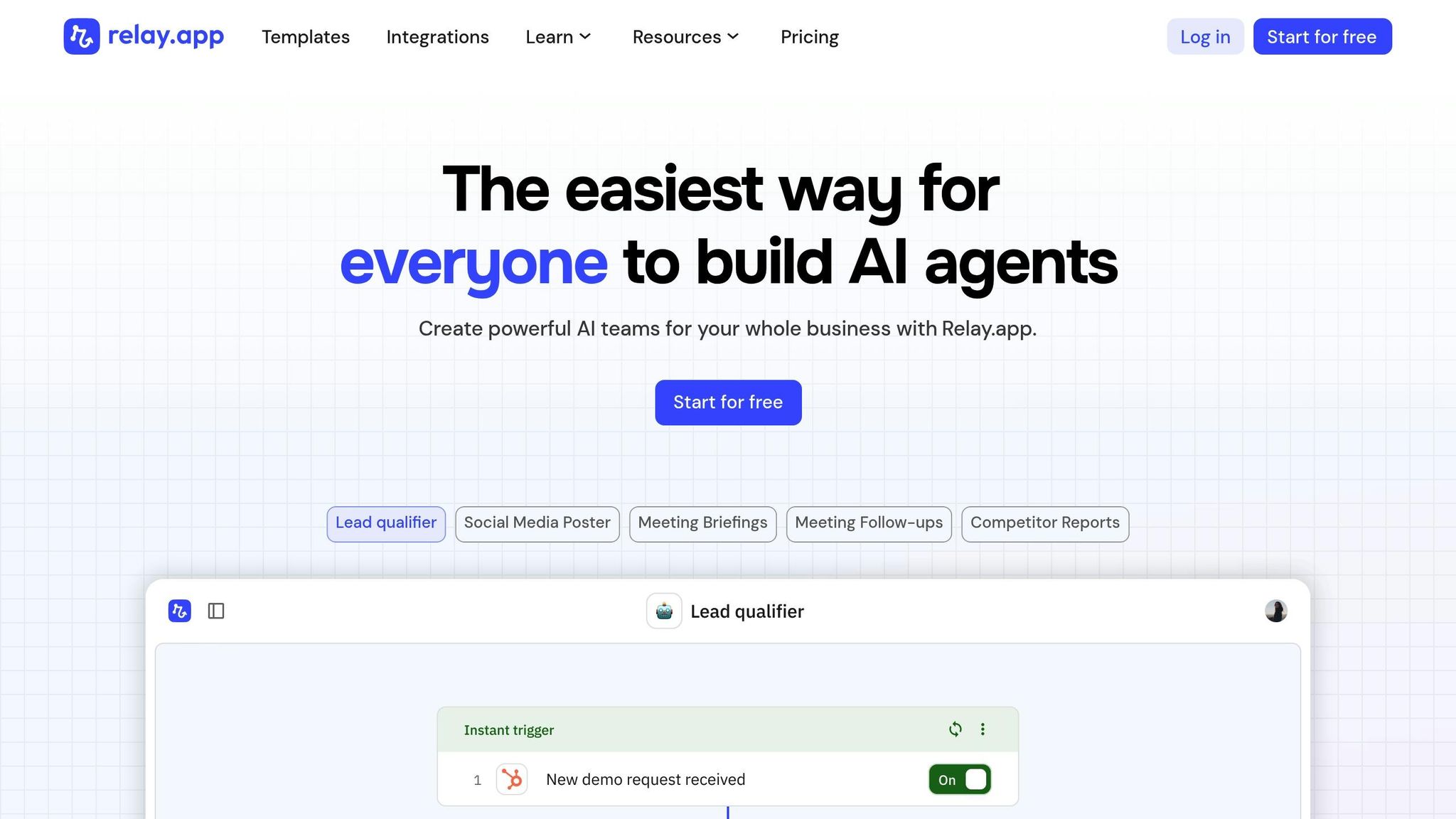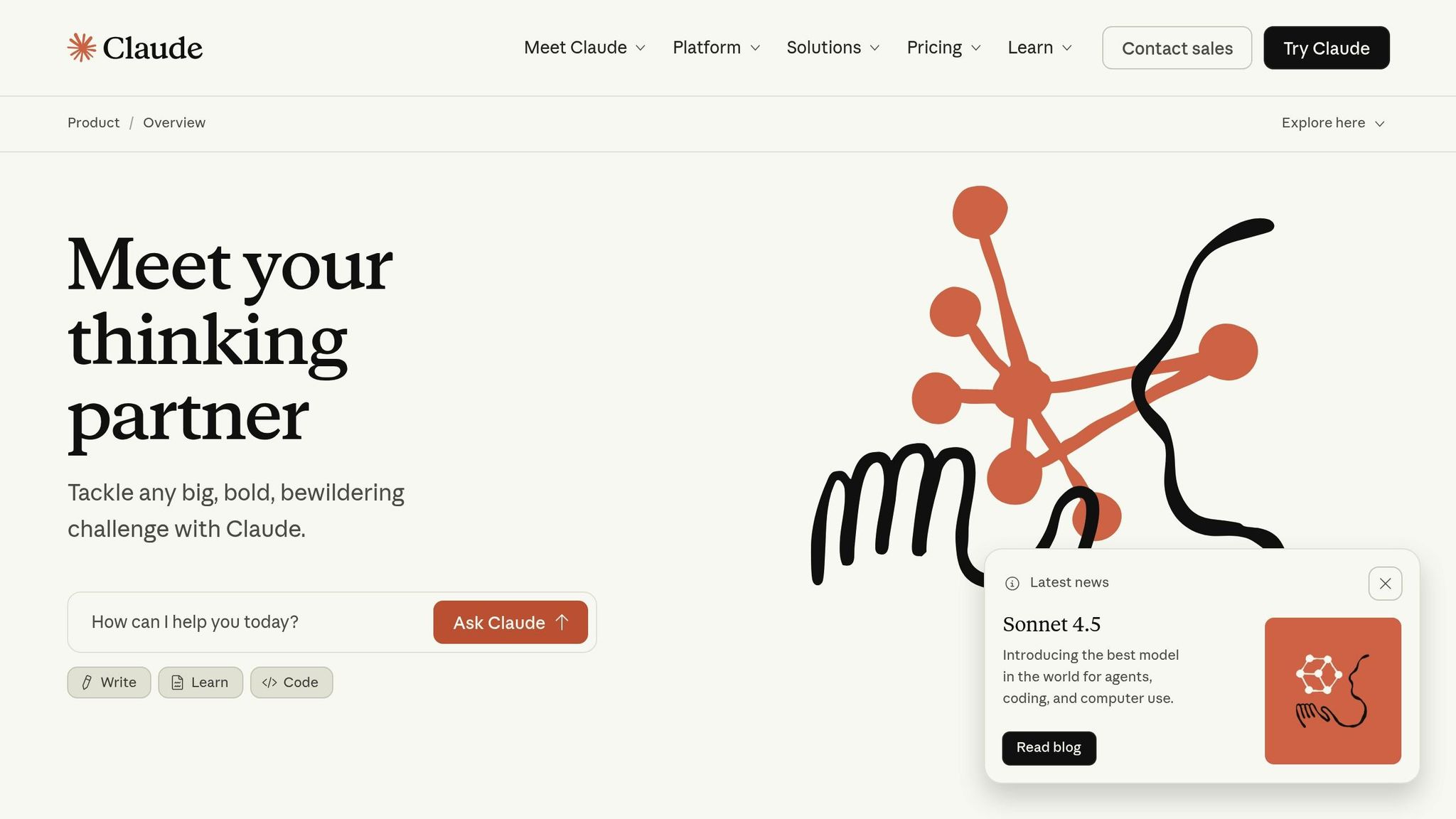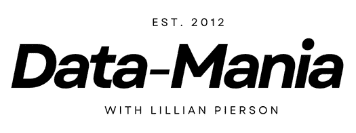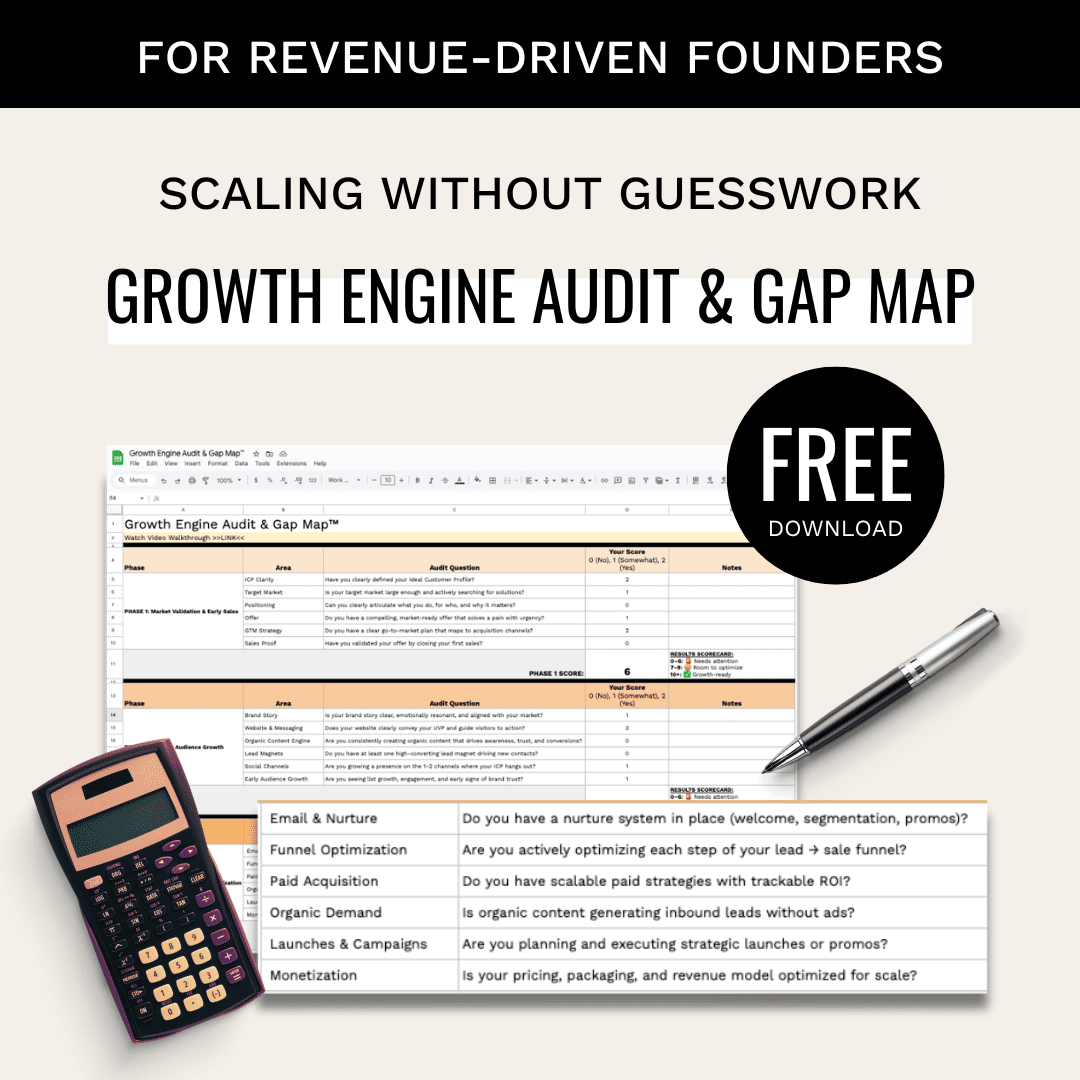Look, I’m going to level with you: most people calling themselves “AI marketing experts” are just really good at talking. But there’s a small group who’s actually building systems that drive massive traction. These 10 folks aren’t theorizing in LinkedIn posts. They’re using tools like n8n, Relay.app, Claude, and Zapier to build workflows that qualify leads, manage content, and scale marketing without burning out their teams.
What sets them apart?
- They build in public: Sharing workflows, templates, and results.
- They deliver measurable outcomes: Think higher conversions, faster campaigns, and saved hours.
- They go beyond basic tools: Using advanced platforms for scalable, reliable systems.
Quick Overview of the Experts:
- Christopher S. Penn: Automates marketing with n8n workflows at Trust Insights.
- Katie Robbert: Simplifies AI for teams with clear processes.
- Jacob Bank: Runs 40+ AI agents on Relay.app to handle tasks.
- Mark Savant: Automates podcast production with Zapier and ChatGPT.
- Lillian Pierson: Builds AI marketing systems for tech startups and the Fortune 100 alike.
- The Boring Marketer: Saves 10–15 hours weekly with Claude-powered content agents.
- Nate Herkelman: Earned $250K selling AI workflows via n8n.
- Automate with Bishal: Offers 1,200 pre-built automation templates.
- Dr. Ernesto Lee: Uses “AI employees” for local lead generation.
- Mart K.: Creates low-cost lead enrichment workflows with n8n.
The bottom line? These AI marketing experts prove AI isn’t just hype. It’s transforming how businesses grow. Their systems save time, cut costs, and drive results. Ready to stop theorizing and start building? Let’s dive in.
VIDEO: I Built a Marketing Team with 1 AI Agent and No Code (free n8n template)
What Makes a Real AI Marketing Expert
Most AI marketing experts are quick to share theories, but the real difference-makers are the ones actually creating and showcasing functioning systems. These builders stand out because of a few key traits that separate them from the noise.
They build in public. True AI marketing builders don’t just talk about automating their marketing. They show it. You’ll see them sharing screen recordings of their workflows, providing templates, and walking others through their automation setups in detail. Their transparency is backed by results. When someone shares how their n8n workflow generates a steady stream of leads daily or how their Claude-powered system churns out multiple blog posts weekly, they’re offering proof, not just hype.
They deliver results you can measure. Data is currency for these AI marketing experts. Whether it’s improved conversion rates or major time savings, they back up their claims with documented evidence. If they say their lead qualification process improved, they’ll have the numbers to prove it.
They go beyond basic tools. While beginners might stick to simple Zapier automations, these builders work with advanced platforms like n8n, Relay.app, and Claude. They understand the technical backbone of their systems (API integrations, webhook configurations, and data flows), which allows them to troubleshoot, refine, and scale their automations effectively. This depth of knowledge is what separates them from those who only dabble in automation.
Their focus is on creating systems that do the heavy lifting: segmenting leads, personalizing outreach, tracking responses, and syncing updates with CRMs, all without manual intervention. This systems-driven approach is what sets these AI marketing experts apart from those who simply collect prompts or dabble in one-off setups.
These builders also embrace a “build-in-public” mentality. They openly share their wins, failures, and lessons learned, often contributing templates and workflows back to the community. This not only drives innovation but also strengthens their credibility in an industry filled with theoretical claims.
What truly distinguishes these AI marketing experts is their technical expertise. They can explain why they chose specific tools for specific tasks, how their systems handle edge cases, and how they ensure scalability and robustness. They’re not building fragile prototypes. They’re creating reliable, scalable solutions.
Finally, their focus isn’t on one-time campaigns but on operational systems. Their automations handle ongoing tasks like content repurposing, lead nurturing, competitive analysis, and performance reporting. These systems continuously refine and improve marketing processes, delivering results without constant human oversight.
1. Christopher S. Penn – n8n Marketing Automations at Trust Insights
Christopher S. Penn doesn’t just talk about marketing automation – he actively builds it, shares his process, and makes it accessible. At Trust Insights, he’s designed workflows with n8n that manage tasks like content distribution, lead scoring, and more, all while documenting the entire journey for others to follow.
Penn’s focus is on solving real marketing headaches through automation. His workflows address common challenges such as manual data entry, slow campaign rollouts, and missed lead follow-ups by connecting various marketing tools into streamlined, automated systems[1][2]. What sets him apart is his transparency – he shares workflow diagrams, live build videos, and open-source templates, giving marketers tools they can immediately put to use. This openness lays the groundwork for measurable improvements.
Through these automated systems, Trust Insights has seen campaign launch times cut by up to 50%, higher lead conversion rates, and more precise tracking of marketing ROI. These results are backed by analytics dashboards and before-and-after case studies, offering clear proof of the impact[1][2].
What makes Penn’s work particularly effective is how he integrates multiple tools into a cohesive system. While n8n serves as the backbone, he incorporates platforms like Zapier, Claude, and Google Analytics to enable smarter decision-making and smooth data flow, all tailored to Trust Insights’ goals[1][3]. These integrations create a seamless marketing stack, automating processes across multiple areas.
Penn also stands out for his willingness to share both successes and setbacks. He openly discusses hurdles like merging different data sources, maintaining data quality, and ensuring system reliability. His solutions include robust error-handling, regular audits, and modular workflow designs that can adapt as needed[1].
One standout example is Penn’s automated workflow for webinars. Using n8n, he set up triggers for sign-up forms, automated email follow-ups via Zapier, and integrated analytics to track performance in real time. This led to a 30% jump in attendee engagement and a 20% drop in manual work[1][2].
Penn’s advice for other marketers is refreshingly straightforward: start with a clear goal, map out manual processes, and pinpoint repetitive tasks ripe for automation. He encourages experimenting with low-code tools like n8n, sharing progress to gather feedback, and focusing on outcomes that can be measured[1][2]. His practical, no-nonsense approach captures the essence of effective AI-driven marketing automation.
2. Katie Robbert – Streamlining AI for Marketing Teams
Katie Robbert focuses on seamlessly integrating AI tools like Claude and Zapier into marketing workflows. Her approach isn’t about chasing trends but about creating practical automations that tackle everyday marketing challenges, ultimately improving team efficiency.
She emphasizes that implementing AI successfully goes beyond just setting up workflows. It requires clear documentation, regular reviews, and well-defined guidelines for when human intervention is necessary. For teams new to AI, her advice is straightforward: start with a single, well-defined process. Once that’s running smoothly, gradually expand automation to handle repetitive tasks. Her practical, hands-on strategy reflects the thoughtful approach shared by many on this list of AI marketing innovators.
3. Jacob Bank (Relay.app) – Marketing with 40+ AI Agents

Jacob Bank is a standout example of turning AI marketing concepts into actionable strategies. Using Relay.app, he manages over 40 specialized AI agents to handle various marketing tasks, ranging from content creation to lead qualification. His system shows how automation can scale while keeping manual effort to a minimum.
What sets Bank’s approach apart is his focus on specialized agents instead of trying to create one tool that does it all. For example, one agent might focus solely on scheduling social media posts, while another handles email follow-ups or qualifies leads. This modular setup not only allows for targeted fine-tuning but also makes troubleshooting more straightforward – one agent can be adjusted without affecting the entire system.
Bank openly shares his methods, offering live demos and workflow templates that showcase how he integrates Relay.app with tools like Claude and Zapier. His advice? Start small. Begin with a single specialized agent, refine it, and then gradually expand as you build confidence in the system. This step-by-step approach highlights how modular automation can deliver consistent, measurable results without overwhelming complexity.
4. Mark Savant – Content Repurposing & Podcast Automation
Mark Savant has mastered the art of simplifying podcast production. As the owner of Mark Savant Media and the host of the “After Hours Entrepreneur” podcast – ranked among the top shows – he uses tools like ChatGPT, Zapier, and Google Forms to handle everything from coordinating podcast guests to managing post-production tasks[5,7].
A key part of Savant’s system is how he gathers and uses structured data. By designing detailed forms, he collects specific information about podcast guests, episode topics, and content needs. This data feeds directly into AI workflows via Zapier, allowing ChatGPT to create tailored outputs like show notes, social media content, and follow-up emails. Instead of relying on generic templates, his process ensures that every piece of content is customized and aligned with the unique needs of each episode[5,7].
The automation goes beyond content creation. Savant’s system also manages guest onboarding, scheduling, and post-interview communications. Guests receive polished follow-up materials automatically, saving his team countless hours of manual effort while maintaining a professional touch[5].
Mark Savant emphasizes how critical automation and AI are in today’s business landscape:
“If you’re not automating processes, not using AI in your workflows, and not empowering your team with AI, you’re probably going to be bankrupt within the next several years. You just won’t be able to compete.” – Mark Savant[4]
His structured approach ensures that AI produces accurate, high-quality content with minimal need for revisions. By focusing on precision and efficiency, Savant demonstrates how automation can uphold both consistency and quality at scale[5].
Beyond streamlining his own operations, Savant has turned his expertise into a scalable business model. His “done-for-you” podcasting services package these AI-driven workflows, offering other business owners a way to save time while producing professional, consistent content[4].
5. Lillian Pierson, P.E. – Fractional CMO Building AI Growth Systems and Teaching AI Marketing for LinkedIn Learning

Lillian Pierson, P.E. is the founder of Data-Mania and a sought-after Fractional CMO who specializes in building scalable growth systems that are powered by AI. With over a decade of experience guiding data-centric organizations, including 30% of Fortune 10 companies and dozens of high-growth tech startups, Lillian is known for translating complex technology into systems that drive measurable marketing performance.
Her approach focuses on building infrastructure over one-off campaigns. Whether designing lead generation engines, automating content workflows, or integrating AI into go-to-market operations, her goal is the same: to help companies grow faster and smarter, with less operational drag.
She uses tools like Claude + custom MCP, Zapier MCP, Bolt, n8n, ChatGPT, Image Gen 1, Pixverse and OpenAI AgentKit, Gamma, Eleven Labs, and Perplexity to handle everything from YouTube workflow automation to campaign planning, from content generation to custom marketing application development – even AI twins (in audio & video media)
At the enterprise level, her Fractional CMO offering delivers full-stack marketing leadership — from strategic roadmap and KPI architecture to team orchestration and AI systems integration.
Lillian’s methodologies don’t live behind closed doors. As a LinkedIn Learning instructor and published author, she’s trained over 2 million professionals in AI and data science. She regularly publishes workflows, templates, and frameworks to help her audience implement AI marketing systems without getting lost in tool fatigue.
What sets her apart among AI marketing experts is her relentless commitment to transparency, precision execution, and ROI. For Lillian, the future of marketing is smart, self-optimizing systems. And that’s exactly what she helps businesses build.
sbb-itb-e8c8399
6. The Boring Marketer – n8n + Claude Content Agents

James Dickerson, better known as The Boring Marketer, has developed an advanced content automation system that’s making waves in the marketing world. By combining n8n workflows with Claude AI, he has created “content agents” capable of producing polished, ready-to-publish posts. His four-stage workflow is a testament to how automation can save time without sacrificing quality.
This system is designed to save Dickerson 10–15 hours each week while generating content that’s indistinguishable from human writing [6][7]. The process flows seamlessly from data collection to idea generation, research validation, and finally, content creation and publishing. At the heart of it all is Claude 3.7 Sonnet, which handles the writing.
What sets Dickerson’s approach apart from other AI marketing experts is the depth of context he provides to Claude. Instead of relying on basic prompts, he feeds the AI detailed data from earlier research and brainstorming sessions. As he puts it:
“Claude when you give it the context and the data it’s so powerful. Like if you arm it with enough context it can come up with some pretty incredible things.”
- James Dickerson, The Boring Marketer [7]
His system takes advantage of multiple AI models, each tailored to a specific task. OpenAI handles ideation, Perplexity supports research, and Claude focuses on writing. By using OpenRouter, Dickerson simplifies access to these tools, eliminating the hassle of juggling multiple API keys.
When it comes to content creation, the system is fine-tuned for results. It avoids obvious AI markers and corporate jargon, instead focusing on conversion-driven copywriting. This includes crafting attention-grabbing hooks, actionable insights, and clear calls to action. To ensure quality and consistency, every piece is reviewed by humans through Google Docs and Slack. Personal touches, like photos pulled from Google Drive, add authenticity to LinkedIn posts, making them more relatable.
Dickerson’s transparent and methodical approach highlights the difference between basic prompt engineering and a truly effective AI-driven marketing system. By openly sharing his process and results, he demonstrates how AI can be used to build practical, measurable solutions for marketers.
7. Nate Herkelman – AI Marketing Agents Built & Sold via n8n
At just 23, Nate Herkelman has turned AI marketing automation into a highly profitable venture. Over the past seven months, his methodical approach to creating and selling AI agents through n8n has brought in over $250,000 in revenue [8]. With this momentum, he’s on track to surpass $1 million in earnings this year [10].
Herkelman’s strategy focuses on business impact rather than technical complexity. Instead of overwhelming clients with intricate multi-agent architectures, he prioritizes solutions that save time, cut costs, and enhance efficiency. This client-centered mindset has transformed modest $1,000–$2,000 projects into deals worth more than $30,000 [9]. His ability to highlight tangible client benefits is a cornerstone of his success.
Reflecting on his approach, Herkelman shared:
“When I sold my first $1,200 workflow, I didn’t pitch ’15 nodes and an API call.’ I said, ‘This will save you hours every week on content creation.’ That’s what made it a no-brainer.” [9]
Herkelman starts each project by meticulously mapping out the workflow – pinpointing triggers, data sources, decision points, and end goals. This upfront planning not only streamlines development but also helps identify potential issues early on. The result? Scalable and modular systems that clients can rely on [8].
The impact of his work is undeniable. One project, initially designed as a personal assistant automation, evolved into a robust workflow saving over 10 hours per week. Another project slashed a $200,000 annual labor expense by 70%, saving the client $140,000 [10].
8. Automate with Bishal – Ready-to-Use Tools for Content Repurposing
Bishal Paul has streamlined the process of content repurposing by creating automation packages that are ready to deploy. These solutions allow businesses to implement AI-powered workflows almost instantly, bridging the gap between theoretical AI concepts and practical, scalable marketing automation. Like other industry leaders, Bishal focuses on delivering real results with minimal effort required for setup.
His automation tools are built around platforms like n8n and Make.com, offering a wide range of workflows to suit various business needs. As of 2025, his collection includes an impressive 1,200 workflows. Among his standout packages is the “Business System Automation Mega Pack”, which features over 520 workflows designed for tasks such as AI integration, CRM management, and streamlining business operations. Similarly, the “Marketing & Engagement Automation Suite” provides 555 workflows tailored for CRM connectivity, email campaigns, and AI-driven content creation [11].
Each workflow is provided as a downloadable JSON file, ready to be imported directly into Make.com or n8n. Users only need to add their API credentials and follow straightforward setup guides to configure features like loops, delays, and webhook integrations. Within minutes, the automation is up and running. This plug-and-play approach eliminates the long timelines typically associated with custom development, saving businesses both time and effort. These templates are not just quick to set up – they’re also designed to address specific marketing challenges effectively [12].
Bishal also offers specialized bundles to tackle targeted marketing needs. For example, his “Complete SEO Automation Suite” includes more than 120 workflows focused on keyword research, content optimization, and performance tracking [11]. For those looking for affordable options, his “50+ Make.com Automation Templates” are priced at just $19, while the “200+ Pro-Level Automations Pack” costs $58.05 – an incredible deal compared to its estimated value of $2,500 [13][14].
What sets Bishal apart is his emphasis on solutions that have been tested and proven in real-world scenarios. His templates are refined through extensive use across multiple client environments. One standout example is the “Lead Gen & CRM Automation Toolkit”, which connects over 10 platforms – ranging from ad networks to email systems and CRM databases – into a unified lead management system. This kind of functionality typically requires extensive custom development, but Bishal’s tools make it accessible and efficient [11].
9. Dr. Ernesto Lee – Automating Local Lead Generation with ‘AI Employees’
Dr. Ernesto Lee approaches AI marketing automation with a focus on local lead generation. His concept of “AI employees” tackles one of the most time-consuming aspects of marketing: finding and qualifying local business prospects. By automating these tasks, he streamlines the process and delivers impressive efficiency gains.
Using tools like n8n, Apify, and Google Sheets, Dr. Lee has automated Google Maps prospecting, enabling his system to process over 25 businesses in less than two minutes. This automation eliminates hours of manual work and translates into major cost savings [15].
Here’s the math: API costs for this setup run about $20 per month, compared to the $150 daily expense of manual prospecting. Over the course of a year, this system saves more than $35,000 per team member [15]. The financial benefits are undeniable.
The results speak for themselves. Within two weeks, users can generate 100–500 new contacts daily. By the end of the first month, over 3,000 verified prospects are collected. After three months, research time drops by 80%, and by six months, the qualified pipeline grows tenfold [15].
Dr. Lee also shares his expertise through detailed guides, like his article “Build Your First AI Employee – Local Business Lead Generation: Automate Google Maps Prospecting That Actually Converts.” This resource provides step-by-step instructions, complete with node configurations, API key setups, and JSON templates. Essentially, his automation acts as the backbone of local lead generation, cutting research time by 90% while organizing local business data seamlessly [15].
10. Mart K. – AI-Powered Lead Generation and Enrichment with n8n
Mart K. wraps up the list with a clever approach to building affordable lead generation and enrichment systems. His method revolves around crafting what he describes as a “virtually free alternative” to pricey lead enrichment platforms, all powered by n8n and AI-driven workflows.
The system kicks off with an AI agent, using GPT-4o mini, that crafts optimized search queries based on user input. These queries are then run through the Google Places API using a custom HTTP tool in n8n. This setup allows for the collection of thousands of local leads at minimal cost, leveraging Google Cloud Platform‘s free tier. The gathered data is stored in Google Sheets, where each new entry triggers an enrichment process. Tools like Firecrawl and Jina.ai come into play here, pulling detailed company information, including mission statements, company size, and contact details. This efficient workflow ensures a solid foundation for further analysis and refinement.
One standout feature of Mart’s system is the smart use of language codes during searches. By tailoring queries to the lead’s native language, the accuracy of the data improves significantly. Afterward, a large language model steps in to classify and qualify the leads, processing the unstructured text gathered during the enrichment phase. This combination of AI and automation delivers a streamlined, cost-effective solution for lead generation.
Tools Powering Modern AI Marketing Automation
The marketing automation landscape has gone through a remarkable transformation, and certain tools have become the backbone of successful AI-driven strategies. These platforms are essential for creating workflows that deliver measurable outcomes, as the leading experts in the field have demonstrated.
n8n has gained recognition as a flexible, open-source solution that lets marketers design complex, multi-step workflows without needing to write code. Experts like Christopher S. Penn and The Boring Marketer highlight its adaptability, particularly in connecting various marketing tools to build custom, cost-efficient automations.
Relay.app plays a major role in orchestrating AI agents. Jacob Bank, for example, uses Relay.app to coordinate over 40 AI agents for tasks like lead scoring and content distribution. This tool enables marketers to efficiently scale their operations by managing multiple agents seamlessly.
Claude serves as a powerful engine for content-related tasks. Its strong integration capabilities make it invaluable for automating content creation, summarization, and optimization, all while ensuring a consistent brand voice across different formats.
Zapier continues to lead in app integration, connecting over 5,000 apps to create sophisticated AI-powered workflows. Mark Savant uses Zapier to repurpose podcast content into multiple formats, benefiting from its wide ecosystem and user-friendly interface.
MCP (Model Context Protocol) allows marketers to create custom AI workflows tailored to specific needs. Lillian Pierson incorporates MCP into her LinkedIn Learning courses to teach learners how to handle intricate, multi-step processes that standard automation tools struggle to manage.
| Tool | Primary Strength | Best Use Case | Typical Pricing |
|---|---|---|---|
| n8n | Open-source | Complex workflow automation | Free & paid tiers |
| Relay.app | AI agent orchestration | Multi-agent marketing operations | Custom pricing |
| Claude | Content intelligence | Brand-consistent content creation | API-based pricing |
| Zapier | App integration | Cross-platform automation | Free & paid plans starting at $20/month |
| MCP | Custom AI workflows | Specialized automation needs | Custom pricing |
| Gamma | Data analytics | Predictive insights and reporting | Varies |
| AgentKit | AI agent deployment | Lead generation and enrichment | Varies |
Gamma adds value by providing predictive analytics, turning raw data into actionable insights. This enables marketers to forecast more effectively and optimize performance.
AgentKit focuses on deploying AI agents for targeted lead generation and enrichment. For example, Mart K. uses AgentKit to streamline prospecting workflows with minimal human input, demonstrating its potential to simplify lead generation.
Here’s the thing: combining these tools often yields the best results. A typical content repurposing workflow might involve Claude for content generation, n8n for workflow orchestration, and Zapier for distributing content across platforms. This multi-tool strategy allows marketers to harness the unique strengths of each platform while building comprehensive automation systems.
Over 51% of marketers now use AI marketing tools for tasks like content optimization and campaign management, benefiting from reduced manual effort, greater consistency, and scalable operations[1].
Each tool offers distinct capabilities that cater to specific needs. While n8n and Zapier excel at connecting platforms, Relay.app and AgentKit specialize in managing AI agents, and Claude and MCP focus on intelligent processing. Gamma, meanwhile, provides the data-driven insights essential for informed decision-making.
These platforms also align well with U.S. business standards, supporting dollar currency formatting, MM/DD/YYYY date formats, and imperial measurement units. This ensures that automated content and reports meet the expectations of American businesses.
Pricing varies across platforms. For instance, Zapier offers plans starting at $20/month, n8n includes free tiers for smaller operations, and both Relay.app and MCP typically use custom pricing based on specific usage needs.
What truly sets these tools apart is their commitment to transparency and community collaboration. Many platforms allow users to share and export workflow templates, promoting a “build-in-public” culture that accelerates learning and innovation within the marketing community.
Conclusion
The marketing world has shifted dramatically. While many boast about their AI knowledge, only a handful have built systems that consistently deliver measurable results. The ten AI marketing experts highlighted here represent a new generation of marketers who focus on getting things done – prioritizing action over theory and automation over empty talk.
What makes these individuals stand out isn’t their ability to speak about AI trends on stages or pen polished LinkedIn posts. It’s their dedication to building, testing, and sharing systems that drive real outcomes. These are the cornerstones of what makes AI-powered marketing automation so impactful.
Take Christopher S. Penn, for example – he frequently shares his n8n automation templates. The Boring Marketer dives into the details of Claude integrations through video tutorials. Jacob Bank has over 40 automated agents running his marketing operations, tackling tasks like lead scoring and content distribution. Then there’s Dr. Ernesto Lee, who has designed “AI employee” systems that consistently generate local leads, proving that automation can fully replace manual workflows.
What’s even more impressive is their openness. Instead of hiding their methods behind proprietary tools or vague promises, they reveal the exact systems they use – tools like n8n, Relay.app, Claude, Zapier, and MCP. This transparency has fostered a community of builders who learn from one another and continue to push the limits of marketing automation.
While some are still debating the potential of AI, these AI marketing experts are already putting it to work. They’ve moved past basic chatbots and simple prompts to create intricate workflows that manage multi-step marketing processes with minimal human input. This shift in execution defines the cutting edge of marketing today.
For marketing leaders, the path forward is clear: automation isn’t optional if you want to stay ahead. The tools are accessible, the expertise is shared, and a thriving community is ready to support you. The real question is, will you step up and start building, or will you stay stuck in discussions about possibilities that others have already turned into reality?
The era of marketing automation has arrived. These ten experts prove that with the right tools, transparent strategies, and a commitment to building, any marketer can evolve from manual tasks to running streamlined, automated systems that drive growth. The future isn’t theoretical – it’s already here. Will you be part of it?
FAQs
How do top AI marketing experts evaluate the success of their automation systems?
AI marketing specialists measure the effectiveness of their automation tools by examining clear, measurable outcomes such as boosted lead generation, higher conversion rates, and stronger content engagement. They also look at efficiency improvements, including time saved and cost reductions, using performance data from platforms like n8n, Relay.app, and Zapier.
To stay on track, they depend on real-time analytics and dashboards to monitor critical metrics, ensuring their workflows provide meaningful results and support business growth goals. Regularly reviewing and fine-tuning their systems helps them stay focused on delivering impactful automation.
What challenges do AI marketing experts face when combining multiple tools into a unified system?
AI marketing professionals often grapple with the complexities of aligning tools like n8n, Relay.app, and Zapier. These platforms often operate with varying data formats and APIs, making it tricky to ensure they communicate effectively. Setting up workflows that connect these tools smoothly demands both technical know-how and a good chunk of time.
Another hurdle is keeping systems stable while steering clear of data silos or workflow errors. Misconfigured processes or overlapping tasks can easily disrupt operations. To make things even more challenging, these platforms frequently roll out updates, pushing experts to stay on their toes, constantly learning and adjusting to keep integrations running efficiently.
How can marketers new to AI automation start creating effective workflows with tools like n8n and Zapier?
If you’re just starting with AI automation, a good first step is to pinpoint repetitive tasks in your marketing workflow. Think about things like scheduling social media posts, repurposing content, or handling lead generation – these are prime candidates for automation and can save you a lot of time.
Begin with beginner-friendly platforms like n8n or Zapier. These tools are designed to let you build workflows without needing specialized technical skills. To make the process even easier, explore their templates and tutorials, which can guide you through setting up simple automations. Start small with manageable tasks, and as you get comfortable, you can expand into creating more tailored and intricate workflows.
Keep your focus on workflows that provide measurable benefits, such as reducing time spent on tasks or boosting engagement. This not only helps you refine your processes but also demonstrates the value of automation to your team or clients. The key is to start with small steps and learn as you go – practice is essential for mastering AI-driven marketing automation.
Who are the top 10 AI marketing experts actually automating growth?
Here’s the list of practitioners who are building real systems, not just talking about them:
1. Christopher S. Penn – Co-founder of Trust Insights, Penn uses n8n to build transparent, open-source marketing automation workflows. He’s known for cutting campaign launch times by 50% and sharing every workflow template he creates. His approach is straightforward: map your processes, find the repetitive tasks, and automate them.
2. Katie Robbert – She focuses on making AI accessible for marketing teams through clear documentation and practical processes. Her advice? Start with one well-defined process, get it running smoothly, then expand. No hype, just systematic implementation.
3. Jacob Bank – Managing 40+ specialized AI agents on Relay.app, Bank demonstrates how modular automation scales. Each agent handles a specific task (social media scheduling, email follow-ups, lead qualification), making troubleshooting straightforward and expansion manageable.
4. Mark Savant – Owner of Mark Savant Media and host of “After Hours Entrepreneur,” he’s automated his entire podcast production workflow using Zapier, ChatGPT, and Google Forms. His systems handle everything from guest coordination to content repurposing, saving his team countless hours weekly.
5. Lillian Pierson, P.E. – Founder of Data-Mania and a Fractional CMO who’s guided 30% of Fortune 10 companies and dozens of tech startups. She builds scalable AI growth systems using Claude + custom MCP, Zapier MCP, n8n, and other advanced tools. She’s also a LinkedIn Learning instructor who’s trained over 2 million professionals.
6. The Boring Marketer (James Dickerson) – He’s built a four-stage content automation system using n8n and Claude that saves him 10-15 hours weekly. His “content agents” produce polished, ready-to-publish posts by feeding Claude detailed context from research and brainstorming sessions.
7. Nate Herkelman – At just 23, he’s generated over $250,000 in seven months by building and selling AI agents through n8n. His strategy focuses on business impact over technical complexity, turning $1,000-$2,000 projects into $30,000+ deals by emphasizing tangible client benefits.
8. Automate with Bishal (Bishal Paul) – He’s created 1,200+ ready-to-deploy automation workflows for platforms like n8n and Make.com. His plug-and-play templates eliminate lengthy development timelines, with packages like the “Business System Automation Mega Pack” (520+ workflows) making advanced automation accessible.
9. Dr. Ernesto Lee – He’s pioneered the concept of “AI employees” for local lead generation. Using n8n, Apify, and Google Sheets, his systems process 25+ businesses in under two minutes, saving over $35,000 annually per team member compared to manual prospecting.
10. Mart K. – He’s built a “virtually free alternative” to expensive lead enrichment platforms using n8n and AI-driven workflows. His system uses GPT-4o mini to craft optimized search queries, runs them through Google Places API, and enriches data with tools like Firecrawl and Jina.ai, all at minimal cost.
What sets these AI marketing experts apart? They all share their workflows publicly, deliver measurable results, and focus on building operational systems rather than one-off campaigns.
Related Blog Posts
- AI Agents in Marketing: The Secret to Driving 10x Engagement & Conversions
- 5 Ways AI Can Optimize Marketing ROI for your Tech Startup
- 5 Best Practices for B2B Marketing Automation Success
- AI Growth Marketing: Forecasting Use Cases




